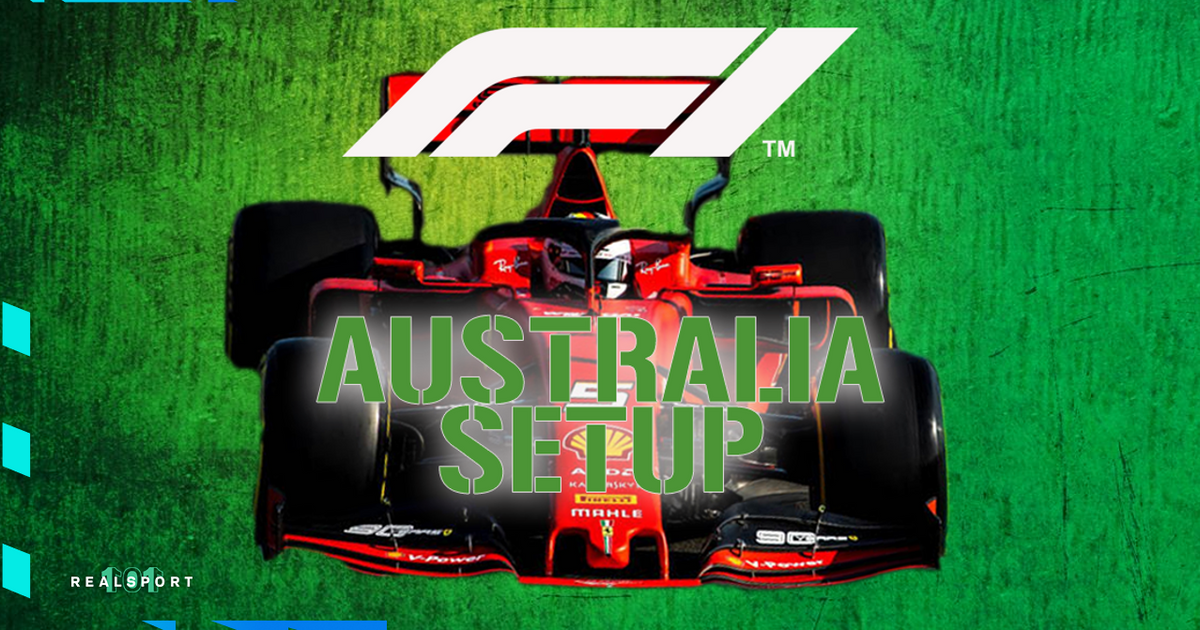The Melbourne Grand Prix Circuit is a street circuit around Albert Park Lake, only a few kilometres south of central Melbourne.
It has hosted the Australian Grand Prix, and the start of the F1 season, for a while now but it is a tough track to master.
Table of Contents
With high-speed sections and slow, technical, corners it is an all-or-nothing kind of circuit. Overtaking can be especially tough, so qualifying is vital
Aerodynamics
Australia is very easy on its tyres and a nice balance of 4 on the front wing aero and 7 on the rear wing gives you the grip you need through the high speed corners at the end of sector 2.
READ MORE: F1 2019 Beginner’s Guide
This wing setting provides plenty of stability and stopping power, but if you get over-ambitious on exit you will suffer with high tyre wear.
Transmission
The transmission section is about how the power is deployed through the rear wheels and into the tarmac.
With 16 turns this is one of the most important parts of your setup. As you will spend a lot of your time on throttle having an open (unlocked) differential on throttle is key.
A 50% is ideal, but this can vary from 50 to 60% depending on driver style.
READ MORE: Everything there is to know about F1 2020
The off-throttle differential describes how free the wheels are to rotate when you are not on the power. This is important when cornering. On average, you are looking at a lot of 45-degree corners around Albert Park.
85% means your tyres rotate at the same speed on corner exit, potentially adding to your tyre wear but increases your ability to carry more speed through the higher speed corners.
Suspension Geometry
As you may have read these are consistently fastest for one-lap pace in Codemasters games, but have the tendency to ruin tyre life in a race... However, this is not taking into consideration all other parts of the setup.
To break it down, camber and toe describe the ability of the car to turn in, maxing out front and rear camber (-2.50, -1.00/ 0.05, 020) makes the car super responsive but quite heavy on its tyres. However, in conjunction with the rest of the setup this works excellently.
Suspension
Suspension is often the meat of the setup and potentially the one people fiddle with the most due to the sheer number of variables at play. By definition therefore it is also the part of the setup that is most user-defined and something you should definitely tweak.
2-3 gives you enough stability while keeping the car pliable over the kerbs.
Roll bars are another setup option that helps with responsiveness and turn in. 4-6 is the best way to ensure consistent and predictable results.
The ride height has been set to 4-2.
Brakes
Stopping power on F1 2019 is vital, miss your breaking zone by a millisecond and it costs you up to a second or even more. We have gone with a balanced 87%, giving you a wide braking range during the race.
Front brake bias is one of the few tools you can alter mid-race. It's not the most important setup tool. We have a 51% that means that in a race you always have a light, slippery car that glides from corner to corner, sector to sector.
Tyres
The lower the pressure, the quicker the car can deliver its power. Given that the car has been setup primarily in all its other facets for responsiveness and agility 23.8 PSI for the front and 21.9 PSI on the rear is a fair compromise.
Overall, it's a radical setup for a radical track. A one-off approach for a one-off piece of tarmac. Responsiveness is the key on a street circuit and using the tried and tested pro's approach with some compromise along the way is my view on optimising your results on one of F1's most difficult and demanding tracks.
Explore new topics and discover content that's right for you!




